Cast Gold Restorations
Should cast gold restorations today be considered as an alternative, given the numerous new tooth-colored materials that are available to the dentist? Has the technology used with cast gold restorations kept up with the general advance in dental technology and dentistry? Is not the use of gold in dentistry an antiquated method that no longer offers the average patient any advantages? This chapter will offer answers to these and additional questions. The purpose, indications, as well as technique of making cast gold restorations will be discussed.
Considering the existing alternatives, treatment with gold restorations, except for the treatment of the distal part of the cuspids, should be restricted to posterior teeth. The reason is simply that gold restorations are only aesthetically satisfactory if they are not visible when the patient speaks or laughs.
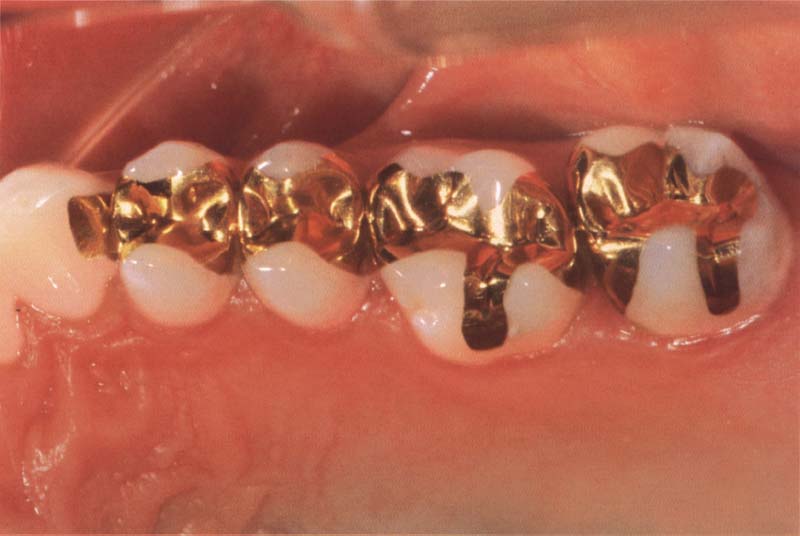
568 Aesthetic gold restorations
Gold inlays are still the most durable of all restorations and therefore dentists usually choose gold to restore their own teeth. However, many patients refuse to have gold for aesthetic reasons.
Gold Inlays
Initially, it seems obvious that materials must be white in order to fulfill aesthetic requirements. However, there are other aesthetic points of view. One of the most important aspects about gold is the fact that it neither discolors nor even darkens the tooth over time. Also, a correctly placed gold restoration is so durable that the necessity for further treatments is minimized and the destruction of dentin and enamel is hindered. Therefore, its longevity of 10, 20, or 40 years indirectly contributes to the aesthetic quality of gold.
Occlusal Inlays
In our “composite world”, is there an indication for the occlusal gold inlay? The answer is “yes” when it comes to occlusal durability and stability, where gold remains the superior material. Of course, the use of gold is restricted by its aesthetics. However, on a second molar the use of a gold filling does not affect the self-esteem of most patients. Finally, the preparation of an occlusal inlay is very simple.
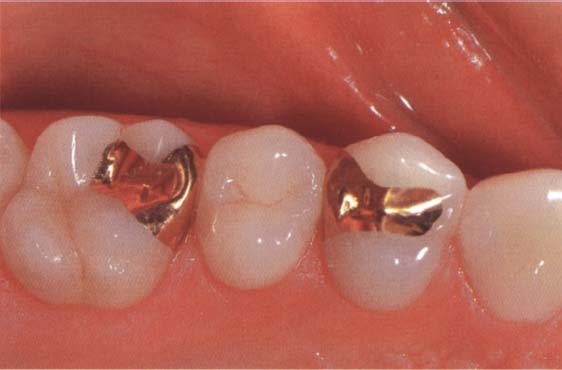
569 Aesthetic gold restorations
This patient’s two very conservative gold restorations have been in service for more than 12 years. No aesthetic problems are obvious.
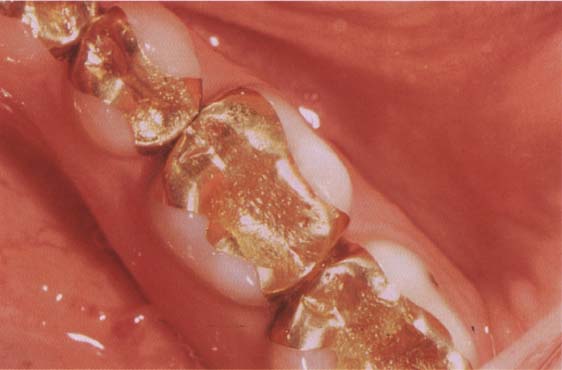
570 Gold—the most durable material
These gold restorations have served this patient for more than 40 years. It is certain that none of the modern restorative materials (ceramics and composites) will be so outstandingly durable.
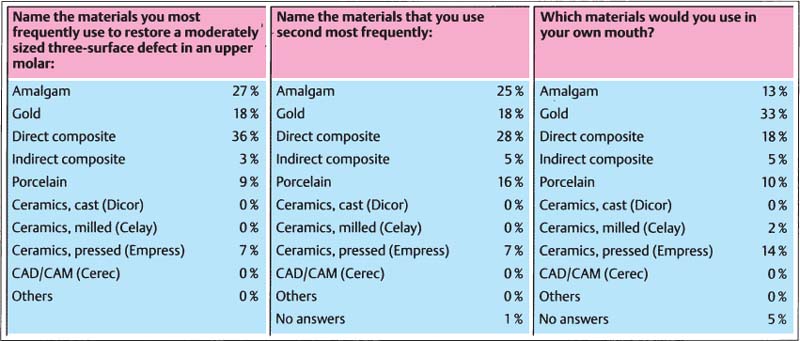
571 Dentists choose gold restorations to treat defects in their own teeth
Results of a survey by the American Academy of Aesthetic Dentistry.
One- and Two-Surface Inlays
An incipient fissure caries lesion is treated by extended fissure sealing. Nowadays one uses composites for this purpose. If an occlusal lesion has become large, the indication is for inlay treatment. An inlay is always indicated if a lasting restoration is needed. With teenagers, whose teeth still need to do their job for a long time, emphasis must be placed on materials that have the best longevity. From today’s perspective, this material is still gold.
Defects involving multiple surfaces on the first and second molars of teenagers should preferably be restored using gold. After an old restoration with caries has been removed, a subfilling is placed. The following materials are available for the subfilling treatment:
— composite with adhesive technology (formation of a hybrid layer)
— compomer and suitable adhesive
— resin-reinforced glass ionomer cement (e.g., Vitremer, Fuji II LCS)
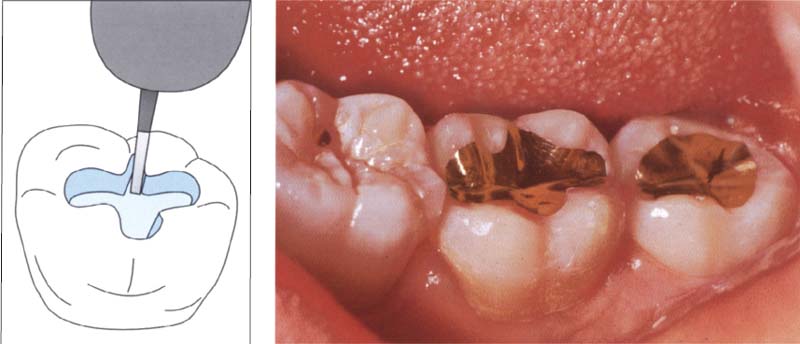
572 The occlusal inlay
Occlusal restorations in the patient’s mouth.
It is clear that composite will be chosen as restorative material for an incipient fissure caries lesion. However, if a bigger defect exists and if the occlusion in this area should remain stable, the restoration of choice is still the occlusal gold inlay. In many cases, such a choice will mean no aesthetic restriction for the patie/>
Stay updated, free dental videos. Join our Telegram channel

VIDEdental - Online dental courses


